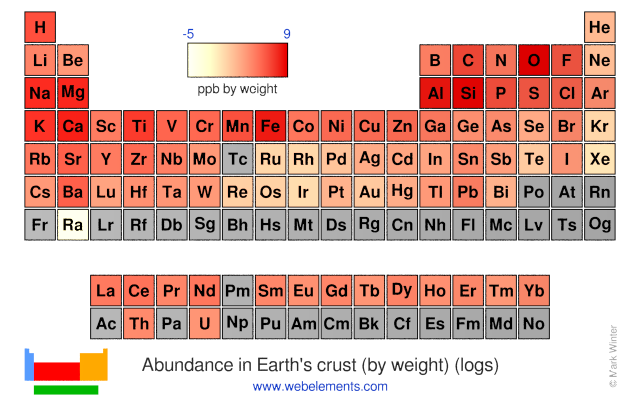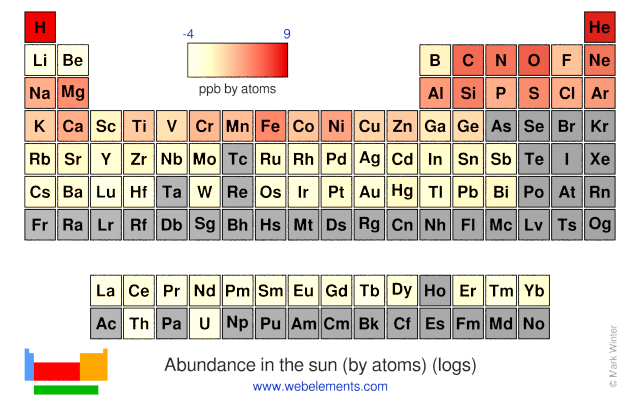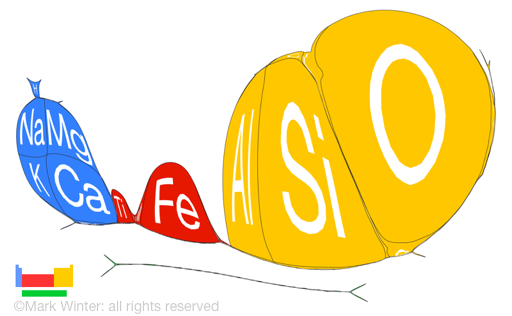Mercury - 80Hg: geological information
Mercury only occurs rarely as the free element in nature. Overall, it is a rare element in the earth's crust. Its main source is cinnabar ore (HgS) from Spain and Italy. The Almaden mine in Spain has been in continuous operation since 400 BC. Other sources include Yogoslavia, Russia, and North America.
Abundances of mercury in various environments
In this table of abundances, values are given in units of ppb (parts per billion; 1 billion = 109), both in terms of weight and in terms of numbers of atoms. Values for abundances are difficult to determine with certainty, so all values should be treated with some caution, especially so for the less common elements. Local concentrations of any element can vary from those given here an orders of magnitude or so and values in various literature sources for less common elements do seem to vary considerably.
| Location | ppb by weight | ppb by atoms |
|---|---|---|
| Universe | 1 | 0.006 |
| Sun | 20 | 0.12 |
| Meteorite (carbonaceous) | 250 | 20 |
| Crustal rocks | 67 | 7 |
| Sea water | 0.05 | 0.0015 |
| Stream | 0.07 | 0.0004 |
| Human | (no data) | (no data) |


The chart above shows the log of the abundance (on a parts per billion scale) of the elements by atom number in our sun. Notice the "sawtooth" effect where elements with even atomic numbers tend to be more strongly represented than those with odd atomic numbers. This shows up best using the "Bar chart" option on the chart.

